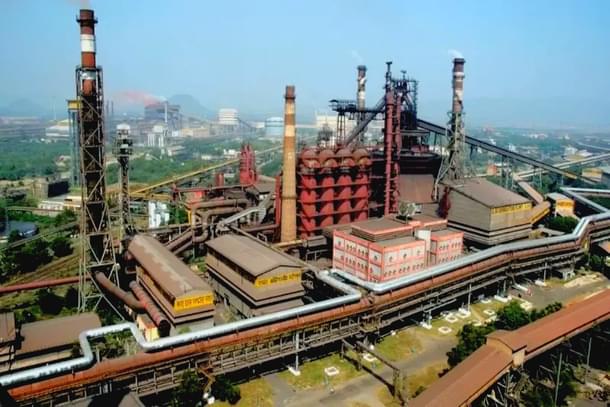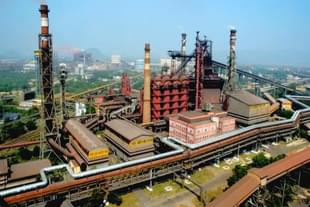Infrastructure
Protest For Vizag Steel Plant: Praja Shanti Party Chief K A Paul On Indefinite Fast To Oppose Privatisation
V Bhagya Subhashini
Aug 30, 2023, 01:36 PM | Updated 01:31 PM IST
Save & read from anywhere!
Bookmark stories for easy access on any device or the Swarajya app.


Praja Shanti Party president K A Paul began the second day of his indefinite fast against the privatisation of the Visakhapatnam Steel Plant (VSP) in Andhra Pradesh.
The Cabinet Committee on Economic Affairs (CCEA) approved a 100 per cent disinvestment in the Rashtriya Ispat Nigam Limited (RINL)-Vizag Steel Plant in 2021.
VSP is the country's first shore-based integrated steel plant.
Paul said the public response and support for his agitation had been great, and he hoped that the Centre would reply favourably as soon as possible.
"I believe that early justice will be delivered in the steel plant privatisation issue only if all MPs and MLAs in Andhra Pradesh resign and put pressure on the Centre," he added, vowing to maintain his fast until the Centre makes an official statement on the matter.
Terming the VSP an asset belonging to 15 crore people, he said all should make every effort to stop its privatisation. He alleged that the Centre was trying to sell VSP for Rs 4,000 crore though it is valued at Rs 8 lakh crore, reports Economic Times.
The VSP has a capacity of 7.3 million tonnes of steel per year, but only two of three blast furnaces are working, generating a total of 5 million tonnes. The third blast furnace requires capital and ore, for which the business solicited expressions of interest from interested parties.
A Brief History Of The Vizag Steel Plant
The establishment of Rashtriya Ispat Nigam Ltd (RINL), the corporate entity of VSP, in February 1982, was not an ordinary occurrence in the government's development programme. Rather, it was the outcome of a prolonged and massive political and public movement that began in 1966, demanding the establishment of the plant in the port city.
The reluctance of the then Union government to set up the steel plant in Vizag led to widespread protests, resulting in over 30 fatalities across Andhra Pradesh. The public movement was so strong that 66 MLAs and 7 MPs belonging to CPI and CPI(M) resigned in support of the demand for the steel plant in Vizag.
Eventually, the Centre gave in to the demands and agreed to establish the first shore-based steel maker in the country in Visakhapatnam.
From its inception, the steel plant had a major flaw — it did not have any captive mines to supply iron ore, the raw material for making steel. As a result, the plant had to purchase iron ore from the open market.
In 2010, the public sector enterprise was granted Navratna status and decided to compete with private players in the market.
V Bhagya Subhashini is a staff writer at Swarajya. She tracks infrastructure developments.





